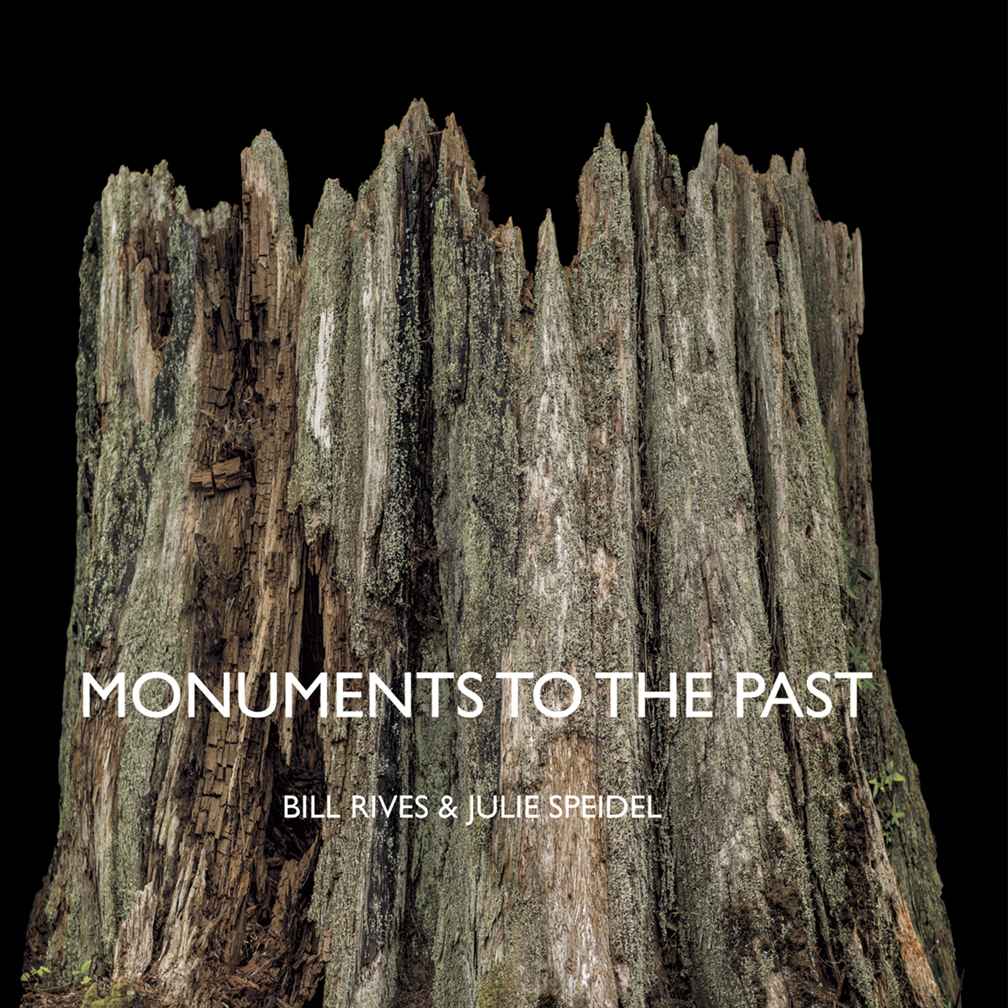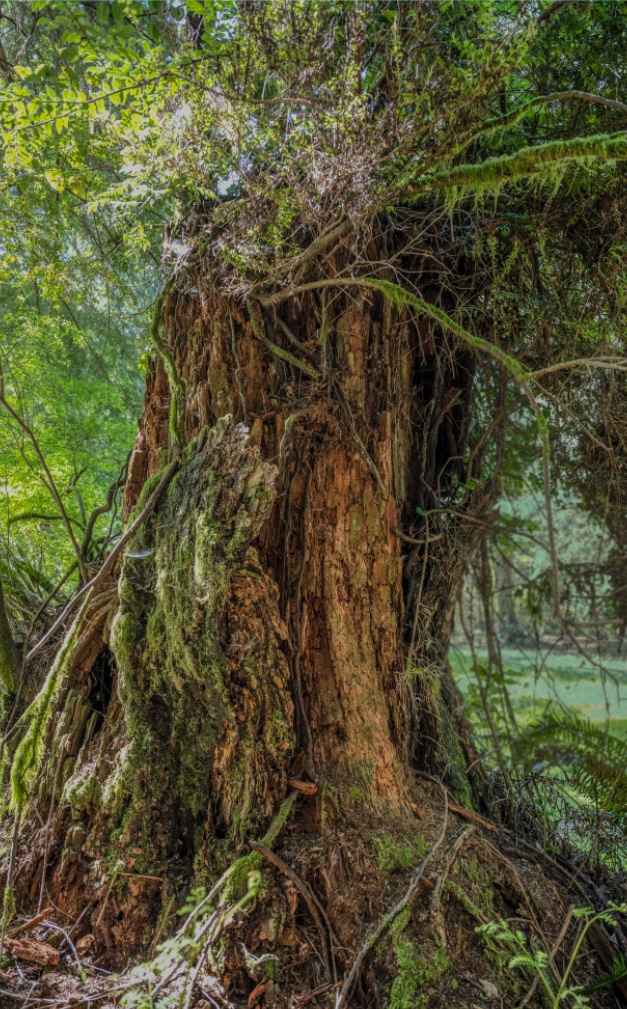
Monuments to the Past is an exhibition of large photographic images of Vashon Island’s ancient stumps by Vashon photographer Bill Rives. Accompanying the exhibition is a finely bound tabletop photography book by Bill Rives and Julie Speidel. The photographs for the show and book create an immersive forest experience in the gallery that connects us with nature and brings to life a little-known island treasure that is an important part of our natural history.
Found deep in Vashon’s forests and along its seacoast, Vashon’s old growth stumps of Western Red Cedar and Douglas Fir are magnificent and awe inspiring. Seldom seen, they are what remain of the old growth forests that once covered the island. Rives’ powerful photographs illuminate these ancient treasures and the deeply interconnected web of life in the forest ecosystem. The massive stumps appear almost mythic as they rise from the earth. The portraits are inspiring in their beauty and invite us to look deeply as we contemplate the value of nature in our lives. We marvel at the size and beauty of these ancient giants. At the same time, the high-resolution photographs, some printed almost wall size, allow us to look more deeply into the intricacies of the forest. At close distance, emerald green patinas become a tapestry of miniature ferns, mosses, lichens, and tiny creatures far too numerous to count, bark stripped away by time reveals the rich hues of cedar heartwood, the roots of young trees sprouting from the tops of tall stumps envelop their host. Deep scars of springboard cuts leave marks high above ground where loggers stood with long crosscut saws to fell forest giants. One can easily imagine the undisturbed old growth forests of the past, with trees hundreds of feet tall filling the sky. We are reminded that there is a debt owing to the Earth, repayable only by preserving our remaining wild places and restoring those lost.
Trees are a powerful weapon against climate change. They sequester carbon, enrich the soil, and make our air cleaner and cooler. Across the world today, governments and international organizations are focused on planting billions of trees to make our planet healthier. An important goal of this show and book is to bring more awareness to this work.
VCA wants to thank Bill and Susan Rives and Julie Speidel and Joe Henke for their generous gift of donating 100% of the proceeds from sales of the photographs and book to VCA to support its programs for children and the community.
Spot Stupendous Stumps... Play "Can You Stump Me?"
Learn secrets and science of the forest
In addition to the photography show and book, VCA is sponsoring a self-guided tour to view some of Vashon’s stumps.
Many of the stumps in the photography show and book can be seen in the Burton Acres public park on Vashon Island’s Burton Peninsula. Trails meander through these woods, bringing walkers close to some of the most impressive old growth stumps on the island. It’s a perfect summer outing for adults and kids who want to connect with nature and see some stupendous stumps. Starting this June, a free map of the Burton woods and stump guide will be available to pick up at Vashon Center for the Arts. Our “Can we stump you” quiz in the guide is a fun game for kids to learn more about stumps and the science of the forest. Free parking is just steps away at Jensen Point.
Meet Bill R ives
ives
Known for his nature photography, Bill Rives has been photographing for more than five decades. Over those years he has also been a member of the law firm Davis Wright Tremaine, and co-founder with his wife Susan of the company Scientific Explorer.
Photography became a passion when he was a young lawyer and head of the Sierra Club in western Washington. Long hikes and climbs in the mountains excited his sense of adventure and awakened a love for wilderness. Photographing the many moods of the high peaks and valleys made him feel deeply connected to the natural world. His understanding of wilderness and the essential bond between humans and nature deepened on trips to the North Slope of Alaska for the Iñupiat People. There he discovered a vast unspoiled wilderness on the edge of the Arctic Ocean where he photographed tundra blooming in the light of a summer sun that shone 24 hours a day. In the winter he climbed jagged ice seracs to record his impressions of the frozen sea in bitter cold with the sun only a dim glow on the horizon. The stark landscape of extremes seemed beyond the reach of human harm. Now we know better.
Rives has remained a curious and dedicated nature photographer, with an interest as well in the urban experience and the implications of a rapidly changing world. He strives for images that express the thoughts and feelings he has in the moment and hopes they say something worthwhile to others who view them. He travels extensively with his camera to record images from distant mountain ranges, the fjords of Glacier Bay, woodlands of Africa, the Sonoran Desert, rainforests of Central America, and city streets in the USA and Europe. In his Vashon Island studio, he makes large prints on fine art papers.
CLICK HERE TO DOWNLOAD A CATALOG OF THE PHOTOGRAPHS SHOWING IN THE GALLERY

•












